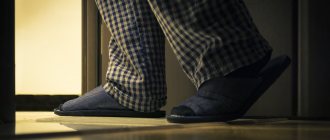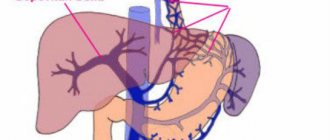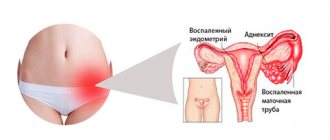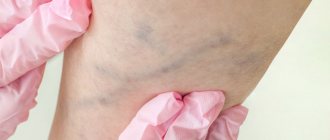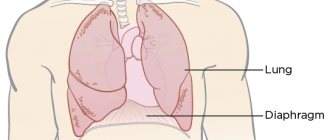Prevalence of the disease
Every decade, the number of patients with cholelithiasis is steadily growing. Since the middle of the last century, the number has doubled every ten years. Currently, more than 10% of the world's population suffers from this pathology. In our country, the disease has been diagnosed in 15 million patients; in the United States, more than 30 million patients are registered. Most often, residents of developed countries are susceptible to the disease, and the risk of the disease increases with age. Among people over 45 years of age, every third person develops the disease. The number of operations performed for cholelithiasis in America in the 70s of the last century exceeded 250 thousand; in the 80s, over 400 thousand were performed. By the end of the century, the number of operated patients had already reached 500 thousand. As you can see, the incidence rate is steadily increasing and today in America the number of surgical interventions on the biliary tract and cholecystectomies reaches 1.5 million cases annually; this figure exceeds data for all other abdominal operations, including appendectomy.
Dietary recommendations
- Sugar is a source of endogenous cholesterol and should be avoided.
- Increase your intake of proteins balanced in amino acid composition.
- Increase your intake of plant proteins: oatmeal and buckwheat, seaweed.
- Accustom yourself to regularly eating plant fibers.
- Avoid eating legumes, animal fats, and coffee.
- Skipping breakfast increases the risk of developing gallstones.
- Vitamins E and C reduce the likelihood of gallstone formation.
Unfortunately, in order to forget about gallstone disease in later stages, it is not enough just to follow the correct regimen and diet. Any doctor will tell you that “this is only an additional therapy, not the main treatment.”
Causes
Rice. 1. Pathological anatomy of the biliary tract in cholelithiasis - stones in the gallbladder and obstruction of the cystic duct by one of them (diagram).
Rice. 2. Stages of laparoscopic cholecystectomy - clipping of the cystic duct and artery.
Rice. 3. Stage of laparoscopic cholecystectomy - intersection of the artery and duct and isolation of the gallbladder from the liver bed.
Rice. 4. View of the anterior abdominal wall during open cholecystectomy - suture after laparotomy.
Rice. 5. View of the anterior abdominal wall during laparoscopic cholecystectomy - 4 punctures.
Unfavorable factors that can provoke the appearance of gallstone disease include:
- age;
- overweight;
- pregnancy and childbirth;
- abuse of low-calorie diets, hunger, parenteral nutrition;
- use of certain medications (postmenopausal estrogens, contraceptive steroids, ceftriaxone, fibrate derivatives, octreotide and analogues, etc.)
- heredity (predominance of lithogenic genes, enzymatic defect in the synthesis of solubilizers, cholesterol excretion)
- Crohn's disease, diabetes mellitus, liver cirrhosis, duodenal, choledochal diverticula, infectious diseases of the biliary system, etc.
It should be noted that women are much more common among patients. In addition, there are so-called controllable factors: excess weight, the use of various low-calorie diets in order to reduce weight. For example, in obese individuals, the disease occurs in 33%. Studies conducted in the USA have confirmed that women whose body mass index (BMI) is 25-29 are more likely to get sick. The situation is aggravated by the presence of various diseases (diabetes, coronary heart disease, hypertension). As BMI increases, the likelihood of developing gallstone disease increases. So in women with a BMI above 35, the risk of developing cholelithiasis increases 20 times. It should be noted that low-calorie diets, as well as sudden weight loss (loss of body weight by 1.5 kg per week), weight loss of more than 24% of the initial weight, increase the risk of developing cholelithiasis.
In addition, the biochemical composition of bile is of great importance. Oversaturation with cholesterol, the state of the pronucleating and antinucleating systems, the formation of a crystallization nucleus, and other indicators are very important in the process of stone formation. In addition, a decrease in evacuation function and dysfunction of the enterohepatic circulation of bile acid should be taken into account. The formation of cholesterol stones is based on the hepatic secretion of vesicles that are enriched with cholesterol. However, neither the mechanism of vesicle development itself nor the factors that influence this process are currently not well understood.
Gallstone disease stage II. Causes and factors for the formation of cholesterol stones
Among the reasons contributing to the formation of biliary sludge (BS), there are four main groups of risk factors that characterize gallstone disease.
Factors contributing to the oversaturation of bile with cholesterol:
- Age, often female, during pregnancy the contractile function of the gallbladder often suffers, which contributes to the formation of biliary sludge, heredity.
- Taking oral contraceptives and estrogen-containing drugs during menopause increases the risk of gallstone formation by 2-2.5 times. Calcium supplements increase the risk of developing BS.
- Excess body weight is an important risk factor for BS, contributing to increased cholesterol synthesis and its excretion through the biliary tract. It should be noted that low-calorie diets, which are used for weight loss, in 25% of cases are accompanied by the formation of BS and the formation of stones.
- Nutrition. Foods low in dietary fiber slow down its movement through the intestines, increase the absorption of secondary bile acids and change the quality of bile. Eating fatty foods containing a lot of cholesterol and refined (purified) foods increase the level of cholesterol in the bile. Small doses of alcohol, on the contrary, reduce its content in bile.
- Liver diseases. With viral hepatitis A, B, G, TTV, an opinion is expressed about the possibility of the formation of gallstones. Diseases of the small intestine (celiac disease, resection of the small intestine), Crohn's disease, etc. disrupt all types of metabolism, including the absorption of bile acids.
- Impaired contractile function of the gallbladder is one of the leading factors in the formation of biliary sludge and stone formation.
Thus, supersaturation of bile with cholesterol is a prerequisite for the formation of BS, but not the only one. An important role is played by the disruption of the quality of bile, all its components, the formation of mucus and the deposition of cholesterol crystals, and disruption of the contractile function of the gallbladder.
Clinical picture and symptoms of the disease
Most often, the first sign that forces the patient to see a doctor is pain in the right hypochondrium, of varying intensity. Cutting or stabbing in nature, the pain is most often constant, often radiating to the right shoulder blade, lower back, and forearm. In some cases (with cholecystocoronary Botkin's symptom), it can radiate beyond the sternum, resembling an attack of angina. It should be borne in mind that the intensity of pain is in no way an indicator of the severity of the process. For example, in some cases, severe pain may disappear, but mild pain does not mean a mild form of the disease.
Often the patient’s condition worsens after eating spicy or fatty foods; their consumption increases the need for bile to process food, which leads to contraction of the gallbladder. In any form of the disease, there is an increase in body temperature. In the form of short rises, the temperature rises to 37-38°C, and the patient often experiences pain. However, during an acute attack accompanied by chills, the temperature can rise to 38-40°C.
In what cases is it necessary to be examined?
- For chronic diseases of the gastrointestinal tract.
- If one of your close relatives suffers from cholelithiasis.
- With excess body weight.
- For rapid weight loss (for example, for the purpose of losing weight).
- In case of poor nutrition (eating 1-2 times a day, taking insufficient amounts of liquid, preferring fatty, fried, spicy, smoked, salty foods).
- In case of lipid metabolism disorders (hypercholesterolemia, dyslipidemia).
- With long-term use of fibrates, hormonal contraceptives.
- For anatomical abnormalities in the biliary system.
- For diabetes mellitus, thyroid diseases.
- After pregnancy and childbirth.
Any of the listed factors is a reason to consult a gastroenterologist-hepatologist. Don't expect complications.
Diagnostics
The diagnosis is based on the results of instrumental studies and anamnesis data.
- Ultrasound examination (ultrasound) of the upper abdominal cavity is performed to diagnose cholelithiasis and calculous cholecystitis. During the study, in addition to stones in the gall bladder or ducts, the size of the gallbladder, the condition of its walls, and pathology of the liver or pancreas are determined.
- gastroduodenoscopy - allows you to determine diseases of the stomach, esophagus and duodenum.
- retrograde cholangiography (x-ray examination using a contrast agent) is performed in the presence of complications.
- transgastric ultrasound of the ducts is necessary when diagnosing choledocholithiasis.
Cholelithiasis. Initial stage - biliary sludge
Biliary sludge - what is it and what does it look like?
The term “biliary sludge” appeared in the 70s of the last century and came from English-language literature. Biliary - from the Latin word biliaris, which means bile, and sludge (English Sludge) - “suspension, dirt, mud, turbidity, silt, sand, ice porridge”, since there is no clear translation, the term sludge is used.
Currently, biliary sludge is understood as any heterogeneity of bile in the gallbladder and ducts, which is detected by ultrasound examination (ultrasound). Detection of biliary sludge is the initial stage of cholelithiasis, its prestone stage.
The first attempts to isolate the pre-stone stage of cholelithiasis were first made in the 70s of the last century, when scientists identified the initial stage of cholelithiasis, understanding by it biochemical changes in the quality of bile with subsequent physico-chemical disturbances in its structure, leading to the formation of cholesterol crystals and the formation of biliary sludge.
Progress in the study and diagnosis of the initial stages of cholelithiasis occurred when ultrasonographic examination (ultrasound) came into widespread practice, which made it possible to create a classification of cholelithiasis and identify types of biliary sludge. Currently, biliary sludge includes any heterogeneity of bile detected by ultrasound.
Main variants of biliary sludge
Echonic bile with clots
Bile with the presence of single or multiple areas of increased echogenicity, having clear or blurred contours, displaced, without an acoustic shadow (loose clots), often located along the posterior wall of the gallbladder.
Suspension of hyperechoic particles
Point, single or multiple, displaced hyperechoic formations that do not produce an acoustic shadow, detected when the body position changes.
Putty-like bile
Echo-heterogeneous bile with the presence of areas approaching the echogenicity of the liver parenchyma, displaced or fixed to the wall of the gallbladder, visible as a clear contour that does not give an acoustic shadow.
In clinical practice, in more than 70% of cases, biliary sludge variant 2 is encountered - a suspension of hyperechoic particles; the detection frequency of the other two sludge variants is 10-12%.
The sensitivity of ultrasound in diagnosing biliary sludge is 55-65%, and the specificity is more than 90%.
Among patients with complaints characteristic of damage to the biliary tract and gallbladder, biliary sludge is detected in 24-55% of cases.
Conservative methods of therapy
To identify cholelithiasis, determine the degree of inflammation in the wall of the gallbladder, as well as select the correct individual tactics for surgical treatment, you can send me a complete description of an ultrasound of the abdominal organs, preferably a gastroscopy, to my personal email address, you must indicate your age and main complaints. In rare cases, if stones in the ducts are suspected, it is necessary to perform an endoscopic ultrasound examination of the ducts and pancreas. If I provide the above research, I will be able to advise you by email.
In the absence of pronounced manifestations, or in case of a single attack of biliary colic, conservative treatment is carried out aimed at reducing inflammation, improving the motility of the bile ducts and bladder, and the outflow of bile. In addition, it is necessary to correct metabolic processes, as well as eliminate concomitant diseases. However, the tactics of therapy depend on the phase of the process, whether it is an exacerbation, biliary colic or remission. The patient can receive treatment either on an outpatient basis or in a hospital (therapeutic department or surgery). During the period of remission, patients are recommended drug therapy, diet, physiotherapy, and sanatorium-resort treatment is also indicated.
For repeated attacks of biliary colic, which are accompanied by pain, surgical methods for the treatment of cholelithiasis are recommended - only in this way can the development of complications be prevented: peritonitis when the gallbladder ruptures, the development of obstructive jaundice and biliary pancreatitis when the stone enters the hepatic duct, which will lead to obstruction of the biliary tract .
Some categories of patients use traditional medicine methods in the treatment of cholelithiasis. As a result, according to the patients themselves, stones come out of the gallbladder with feces. However, the opening of the sphincter of Oddi, which separates the small intestine from the common bile duct, is no more than 3 mm in diameter. In this case, stones visible to the naked eye simply cannot enter the intestinal lumen. In fact, the patient may find “stones,” which are nothing more than clots of bile that enter the intestines in large quantities. Stone-like formations the size of a walnut, greenish-yellow in color can come out under the influence of various choleretic agents: decoctions and infusions of St. John's wort, flaxseed, immortelle flowers, dandelion root, stelina, peppermint, trefoil, etc. Thus, folk remedies have only a choleretic effect, but the stones are still in the patient’s gall bladder. It should be borne in mind that uncontrolled use of folk remedies can lead to undesirable consequences. Thus, as a result of increased peristalsis, stones in the gallbladder can move, blocking the duct, which will lead to edema, the development of an attack of acute cholecystitis, which, in turn, will cause obstructive jaundice and the development of acute pancreatitis.
In cases where the inflammatory process is pronounced, as well as with long-term stones, with the development of reactive changes in organs located nearby (duodenitis, pancreatitis, cholangitis, hepatitis), as well as with stone obstruction of the neck of the gallbladder, conservative treatment may be useless.
Treatment and prevention of biliary sludge
Therapeutic tactics are discussed with the attending physician, taking into account clinical manifestations, ultrasound examination data, duration of existence, and causative factors of biliary sludge.
1 group of patients
If eliminating the causative factor leads to the disappearance of BS, then drug treatment may not be required; it is enough to streamline your diet and reduce body weight. But if the patient does not have clinical manifestations of BS, but BS persists on ultrasound for 3 months, then a course of conservative treatment is indicated.
Group 2 patients
Based on the pattern of gallstone formation and the appearance of complications, therapeutic measures are required, based on the characteristics of the course and manifestations of BS.
Group 3 patients
Patients with a high risk of developing purulent complications that sometimes require surgical intervention.
All patients with biliary sludge should follow a diet - eating every 3-4 hours. Not to starve! The diet should be balanced, contain proteins, carbohydrates, fats (depending on the function of the gallbladder), dietary fiber (bran, pectin, grains, vegetables).
The main objectives of conservative therapy for patients with biliary sludge:
- improving the quality of bile,
- elimination of dysfunctions of the gallbladder and sphincter of Oddi, duodenum, small and large intestines,
- normalization of digestion and absorption,
- correction of the normal composition of intestinal microflora.
To solve these problems, the course of conservative treatment includes different groups of drugs. The basic drug is ursodeoxycholic acid drugs, choleretic drugs, antispasmodic drugs, enzyme preparations, a course of antibacterial drugs according to indications, biological drugs (Enterosan).
The course of conservative treatment is determined by the doctor based on the results of the examination individually, taking into account concomitant diseases and therapy for them, the results of dynamic studies of the effectiveness of treatment.
The duration of the course is from 1 to 3 months or more, and then transition to preventive treatment (dietary regimen, individual nutrition, short courses of choleretic drugs according to indications, probiotics, “on demand” enzymes, antispasmodics.
Surgical methods of treatment
Today there are two main methods of surgical treatment for cholelithiasis:
- Laparoscopic cholecystectomy
- with this method, the intervention is performed using laparoscopic equipment through small incisions on the anterior wall of the peritoneum, through a puncture in the umbilical area or transvaginally. Today, laparoscopy is recognized as the “gold” standard in abdominal surgery. Among the advantages of this method, it is worth noting the excellent cosmetic result: only small incisions remain on the skin. The rehabilitation period is much shorter than with traditional surgical treatment. The patient begins to walk on the first day, and on the second day he is allowed to take liquid food. The operated patient usually leaves the clinic on the 2nd or 3rd day after the operation. A person can usually start work within 10-14 days. - Traditional cholecystectomy
is an open operation, performed manually, with a 15-20cm incision made on the anterior abdominal wall. Currently, surgical intervention using this method is performed only for complications of cholelithiasis (peritonitis, gallbladder perforation).
These operations are performed under general anesthesia, and the gallbladder is removed along with the stones according to the same procedure. If there is a single large or several small stones, the gallbladder is completely removed. Some patients ask about the possibility of removing only stones while preserving the gallbladder. It is possible to perform such surgical intervention. However, at this time there is no definite guarantee that the stones will not reappear. Today, specialists from all over the world are working on this problem, but stones often reappear within six months.
Watch a video of operations performed by Professor K.V. Puchkov. You can visit the website “Video of operations of the best surgeons in the world.”
Treatment stories
Story No. 1
Patient T., 42 years old, contacted a gastroenterologist at the EXPERT Clinic with complaints of decreased appetite, nausea, bitterness in the mouth, heaviness and pain in the right hypochondrium after eating. From the medical history it is known that after giving birth 15 years ago, she gained 23 kg in body weight, eats irregularly, loves sweets and fatty foods. For the last 3 years she has been taking hormonal contraceptives. From the life history it was possible to find out that the patient’s mother and grandmother suffer from cholelithiasis (GSD). Both were operated on. When examining the patient, attention was drawn to grade 2 obesity, mild pain on palpation of the right hypochondrium, and a coated tongue. During the consultation, an ultrasound of the abdominal organs was performed, where it was established that there was a single cloud-like formation occupying 1/3 of the volume of the gallbladder with its compaction
Transvaginal laparoscopic cholecystectomy using the NOTES method
Rice. 6. Scheme of laparoscopic transvaginal cholecystectomy using NOTES technology
Rice. 7. View of the anterior abdominal wall during laparoscopic cholecystectomy using SILS technology.
Since 2007 in France, and since 2008 in the Russian Federation, a unique method of removing the gallbladder has been practiced - transvaginal cholecystectomy using NOTES technology. The operation is performed without any punctures of the abdominal wall, therefore, there are no postoperative scars. The essence of the surgical intervention is access to the affected organ through a small puncture (1 cm) of the posterior vaginal fornix. The intervention is performed using laparoscopic instruments and optics introduced into the peritoneal cavity through this access. After removing the gallbladder through the same access, one suture is placed on the puncture. The synthetic suture material used in this case dissolves within 3-4 weeks.
The advantages of this method are:
- in the absence of pain after surgery;
- the patient's motor activity is not impaired;
- short rehabilitation period, patient hospitalization lasts only one day;
- excellent cosmetic effect;
After 7-10 days after surgery, a person can begin to work, and they can play sports on the 14th day. Among the restrictions in the postoperative period should be the need to exclude intimate relationships for a month. At the same time, the genital organs (uterus, appendages, etc.) are not affected during transvaginal cholecystectomy, so their functionality remains unchanged.
Prevention and lifestyle recommendations
- Compliance with the regime, diet: eating every 3-4 hours, excluding long periods of fasting, drinking enough liquid per day. A nutritionist will help you create the right nutrition program.
- Avoid fatty and fried foods, smoked foods, and strong alcohol.
- Include dietary fiber in your diet.
- Maintain an active lifestyle, exercise.
- Bring your body mass index to a normal value.
- Don't lose weight quickly, do it gradually.
- If possible, avoid taking medications that promote stone formation (oral contraceptives, antibiotics, fibrates).
- If you have diabetes, try to keep it in the compensation stage.
Single-port laparoscopic cholecystectomy SILS
The use of the NOSE technique is technically impossible in cases where patients have undergone many surgical interventions on the pelvic organs in the past. Therefore, an equally effective method of minimally invasive cholecystectomy was developed, which has been used in America since 2008, and since 2009 such operations have been performed by domestic surgeons. We are talking about removing the gallbladder through a puncture in the navel area (SILS technology).
Single-port laparoscopic cholecystectomy
consists of performing an operation using a special device (port), which is a soft plastic apparatus that is inserted into the abdominal cavity through a puncture. Port diameter 23-24 mm. It is through this that laparoscopic instruments are inserted; the diameter of the laparoscope does not exceed 5 mm. Upon completion of the operation, a cosmetic suture is applied to the small wound. Surgical intervention using SILS technology (single-port surgery), in contrast to conventional laparoscopic access (multi-puncture), has a number of advantages:
- fewer punctures on the abdominal wall;
- less pain after surgery;
- shorter rehabilitation period;
- better cosmetic effect;
The advantages of this method of surgery are especially noticeable when there are multiple stones in the gallbladder - with the usual method, the surgeon must increase the puncture to remove stones and the diseased organ.
The choice of the appropriate surgical treatment method depends on the individual characteristics and health status of the patient. Visiting a clinic with qualified and experienced specialists guarantees the highest possible treatment results.
If you have:
Nothing hurts. A deformation in the gallbladder was accidentally discovered
Deformation of the gallbladder is often related to anatomical features and can be asymptomatic for a long time. At the same time, there may be a violation of the outflow of bile from the gallbladder, oversaturation of bile with cholesterol, the formation of sediment, putty-like bile, and the formation of biliary sludge, which is the most important condition for the formation of gallstones. Over time, complaints may arise:
- for a periodic feeling of discomfort or dull pain in the right hypochondrium
- bitterness in the mouth
- flatulence
- unstable stool with a tendency to diarrhea.
In this case, an active lifestyle, physical exercise, and normalization of body weight are recommended. A consultation with a gastroenterologist is necessary in order to select drug therapy (if necessary), recommendations for proper nutrition, and further observation.
Nothing hurts. We accidentally discovered flakes, thick bile, and biliary sludge in the gallbladder
In approximately half of patients, biliary sludge does not cause any symptoms and is detected only by ultrasound of the gallbladder. Many patients do not attach importance to this pathology and do not consult a doctor. Meanwhile, the long-term existence of biliary sludge in more than half of patients can be complicated by biliary pancreatitis, dysfunction or stenosis of the sphincter of Oddi, acute cholecystitis, cholangitis, and gallbladder shutdown. 20% develop gallstones. To prevent the development of cholelithiasis and complications, timely consultation with a gastroenterologist-hepatologist is recommended. As a result, the causes that contribute to the formation of biliary sludge and the development of complications will be identified and eliminated.
There are complaints. Deformation of the gallbladder, flakes, thick bile, biliary sludge in the gallbladder were detected
If complaints arise, it is often not enough to make do with recommendations for lifestyle changes, moderate physical activity, and normalization of body weight. A consultation with a gastroenterologist is necessary in order to select drug therapy that will improve the excretion of bile from the gallbladder, relieve pain, prevent the formation of gallstones and the development of complications in the future, and, as a result, avoid surgical treatment in advanced cases.
The stones were identified a long time ago, but nothing bothers me
Latent (asymptomatic) stone carriage requires long-term observation by a gastroenterologist-hepatologist:
- to determine indications for gene therapy - medicinal dissolution of stones using bile acids (in the presence of cholesterol stones)
- for an ultrasound scan, which will determine the size and shape of the gallbladder, the thickness of its wall, the number of stones and their size
- to determine the dynamics of these indicators over time
If necessary, a joint consultation with a surgeon is held and indications for surgical treatment are determined.
There are complaints. Gallstones detected
Immediately consult a gastroenterologist, where a specialist will determine:
- indications for drug dissolution of stones
- will select therapy to relieve the patient’s complaints
- will reveal metabolic disorders underlying stone formation.
The success of conservative therapy for cholelithiasis is determined by strict adherence to recommendations and the correct selection of litholytic therapy. The effectiveness of treatment is monitored by a gastroenterologist-hepatologist using ultrasound examination, which must be carried out throughout the entire course of treatment. After completing the drug course of dissolving stones, in rare cases, relapse of stone formation is possible. Therefore, to prevent relapse, the gastroenterologist creates supportive and preventive therapy.
Heaviness, discomfort, pain under the “spoon” and in the right hypochondrium
These complaints are quite nonspecific and may be present in diseases of the liver, pancreas, stomach, duodenum, gall bladder (including cholelithiasis).
If you are concerned about heaviness, discomfort, pain in the pit of the stomach and in the right hypochondrium, you need to seek help from a gastroenterologist-hepatologist who:
- will find out the history of the disease
- will conduct objective research
- will determine the scope of necessary additional examination
There are stones, there was 1 colic
Mandatory observation by a gastroenterologist-hepatologist:
- to prescribe the necessary treatment
- to control the situation and constant monitoring
This simple measure:
- reduces the risk of recurrent colic
- prevents the development of disease and complications
There are stones, there were 2 colics
Repeated biliary colic, a relapsing course of the disease, increases the risk of complications and the risk of death by almost 4 times.
In this case, mandatory observation by a gastroenterologist-hepatologist together with a surgeon is indicated:
- to determine treatment tactics
- if necessary – to resolve the issue of surgical treatment
It is necessary to remove the gallbladder - what to do?
When preparing for a planned cholecystectomy, a joint consultation with a gastroenterologist-hepatologist and a surgeon is necessary:
- to determine the presence of indications and contraindications for surgical intervention
- if necessary - to draw up a plan for additional examination
In case of a decision on surgical treatment, it is important to perform a number of instrumental and laboratory tests, which are included in the standard examination before surgery.
The gallbladder has already been removed. Do I need to see a doctor, and which specialist should I see?
The gallbladder is an important organ of the gastrointestinal tract. In its absence, the following are often observed:
- change in hormonal function
- change in concentration function
- disorders associated with changed conditions of food absorption in the intestines.
This leads to disturbances in motility and secretory function of the stomach, ulcerative lesions of the stomach or duodenum, duodenitis, pancreatitis, intestinal lesions, disturbances in the metabolism of fat-soluble vitamins, protein and carbohydrate metabolism, fat metabolism and calcium metabolism.
Patients who have undergone cholecystectomy (that is, surgical removal of the gallbladder) require constant monitoring by a gastroenterologist-hepatologist.
In most cases, removal of the gallbladder does not relieve the patient of metabolic disorders underlying stone formation. The separated bile contains many cholesterol crystals and remains thick and viscous. After surgery, the pathological processes underlying cholelithiasis occur in new conditions: due to the absence of the gallbladder, the physiological function it performs is no longer possible, the motility of the biliary tract is impaired, and there is no regulation of the processes of bile formation and bile excretion.
Loss of the physiological role of the gallbladder, namely the lack of concentration of bile during the interdigestive period and its release into the duodenum during meals, is accompanied by impaired excretion of bile and indigestion. Changes in the chemical composition of bile and its chaotic entry into the duodenum disrupt the digestion and absorption of lipids, reduce the bactericidal properties of intestinal contents, which leads to microbial contamination of the duodenum and weakened growth of normal intestinal microflora.
In this regard, the patient may be concerned about:
- nausea
- vomit
- heartburn
- bitter feeling in the mouth
- flatulence
- unstable chair
- constipation
- frequent loose stools
- stomach ache
Excessive bacterial growth in the intestines leads to disturbances in protein, carbohydrate and fat metabolism, calcium metabolism and fat-soluble vitamins. This results:
- to frequent heavy diarrhea
- to weight loss
- to osteoporosis (disorders of bone mineralization)
- to vitamin deficiencies, which are manifested by loss of skin elasticity, fine wrinkles, peeling, depigmentation, dry skin, damage to the lips (hyperemia, swelling, peeling, formation of cracks and crusts, weeping in the corners of the mouth), damage to the tongue (ulceration of the papillae, the appearance of cracks), damage to gums (looseness and bleeding, weakening of teeth and their loss)
At least once every 4 months - with this frequency, regular observation by a gastroenterologist-hepatologist and ultrasound of the bile ducts (dynamic echo-choledochography) after cholecystectomy are recommended for early diagnosis of possible complications.
A year after removal of the gallbladder, the same symptoms appeared: pain in the right side, nausea, loose stools
In patients after removal of the gallbladder, the existing clinical manifestations may be associated with a number of factors:
- changes in the chemical composition of bile
- impaired excretion of bile into the duodenum
- impaired motility of the biliary tract
- excessive growth of pathogenic microflora in the intestines
- disruption of food digestion and nutrient absorption
In this case it is necessary:
- consultation with a gastroenterologist-hepatologist
- specialized ultrasound examination (dynamic echo-choledochography)
- subject examination
- complex treatment
- further long-term follow-up

